جامعترین دوره آموزش اسپلانک ( Splunk ) فارسی در قالب 80 فیلم آموزشی اسپلانک + فایل های کاربردی دوره اسپلانک ، بصورت مقدماتی تا پیشرفته برای اولین بار در ایران بصورت آنلاین توسط مهندس میراسدالهی بر اساس آخرین سرفصل های استاندارد آموزش Splunk در دنیا تهیه و تدوین شده است و در قالب دوره آموزش اسپلانک کاربردی در وب سایت توسینسو منتشر شده است.
شما با آموزش اسپلانک | Splunk ای که در این دوره یاد می گیرید می توانید یک مرکز عملیات امنیت یا SOC را از صفر تا صد راه اندازی کنید. یادگیری راه اندازی SOC یا مراکز عملیات امنیت از مهمترین تخصص های مورد نیاز سازمان ها در حوزه امنیت اطلاعات می باشد.
اسپلانک (Splunk) چیست؟
اسپلانک (Splunk) نرمافزاری است برای ذخیرهسازی، جستوجو، بررسی و تجزیه و تحلیل دادهها. با استفاده از اسپلانک میتوانیم با بررسی و تجزیه و تحلیل دادهها، الگوها و ارتباطات منطقی بین دادهها را پیدا کرده و با ارائه اطلاعات مفید و پیشبینی خطرات و ریسکها، مشکلات موجود را برطرف کنیم و با کاهش هزینهها، درآمد را افزایش دهیم. اسپلانک این قابلیت را برای ما فراهم کرده است تا از دادهها گزارش (Report) بگیریم، هشدار (Alarm) بسازیم و دادهها را به صورت فانتزی و گرافیکی، روی یک Table، چارت (Chart)، نقشه (Map) و یا داشبورد (Dashboard) نشان دهیم.
این دوره ترکیبی از چند دوره اسپلانک میباشد. مانند splunk fundamental 1 و splunk fundamental 2 و Splunk Administration و Splunk power user و Splunk Core Certified و.... همچنین در این دوره به بررسی ارسال لاگ انواع دستگاههای مختلف از جمله فایروال فورتیگیت (Fortigate)، ویندوز (Windows)، لینوکس (Linux) و... به اسپلانک میپردازم.
در صورتی که علاقهمند به تشخیص، تحلیل و بررسی حملات سایبری با اسپلانک هستید میتوانید به دوره آموزشی تحلیل و بررسی حملات با اسپلانک | Cyber Security Analysis With Splunk مراجعه کنید.
خلاصهای از ویژگیهای اسپلانک به شرح زیر میباشد:
- SPL) Search Processing Language): به زبان جستوجو در اسپلانک SPL گفته میشود. با بیش از 140 دستور، سینتکسهای این زبان براساس Unix Pipeline و SQL است.
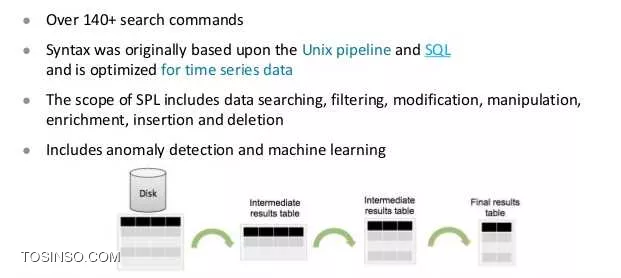
- گزارش (Report) در اسپلانک: به نتایج ذخیره شده از یک عمل جستوجو گزارش میگویند که میتواند Eventها را به روشهای گوناگون نشان دهد. گزارشها میتوانند بر اساس یک زمان از قبل تعیین شده در زمان معین اجرا شوند و در هر بار اجرا شدن نتایج جدید را به ما نشان دهند.

- هشدار (Alert) در اسپلانک: از Alert برای نظارت (به صورت لحظهای یا زمانی از قبل تعیین شده) Eventها و اجرا کردن یک عمل (Action) در صورت وقوع Event (برقرار بودن شرط) مورد نظر استفاده میشود.
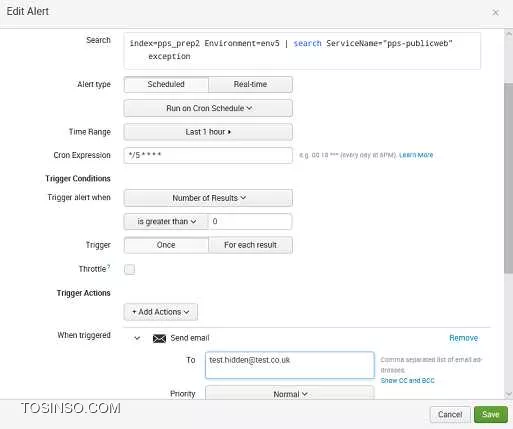
- Visualization: با استفاده از Visualization میتوانیم نتایج سرچ را به صورت فانتزی و گرافیکی بر روی چارت، نقشه، داشبورد و یا Table نشان دهیم.
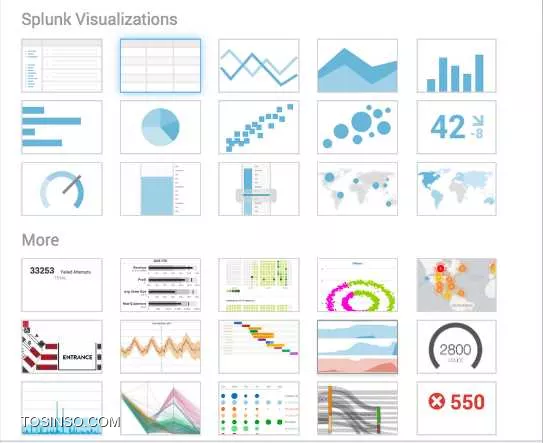
- داشبورد: با استفاده از داشبورد، نمودارها، چارتها و گزارشها در قالب پنلهای گوناگون با هم دیگر ترکیب میشوند تا اطلاعاتی جامع از دادهها را در قالب یک صفحه یا تصویر به کاربر نمایش دهند.
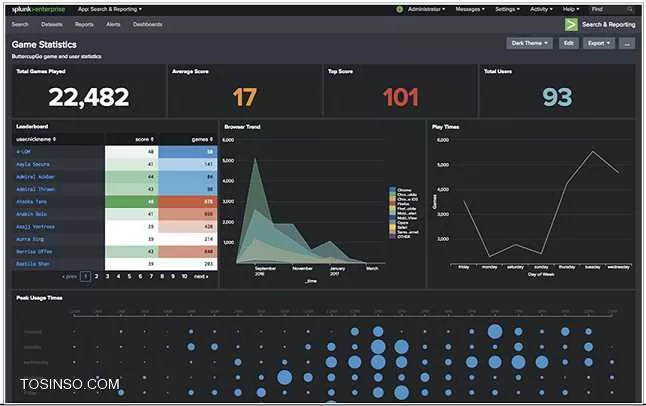
- Appها و Add-onها در اسپلانک: Appها و Add-onها باعث گسترش عملکرد اجزاء اسپلانک میشود. Appها و Add-onها به صورت بستهای از تنظیمات بر روی اسپلانک نصب میشوند و شما میتوانید از طریق Splunkbase یا فروشگاه اسپلانک، App و Add-on مربوطه را دانلود کنید. از طریق قابلیتی که اسپلانک در اختیار کاربران قرار داده است میتوانیم Appها و Add-onهای شخصیسازی شده (Customized) خودمان را بسازیم.
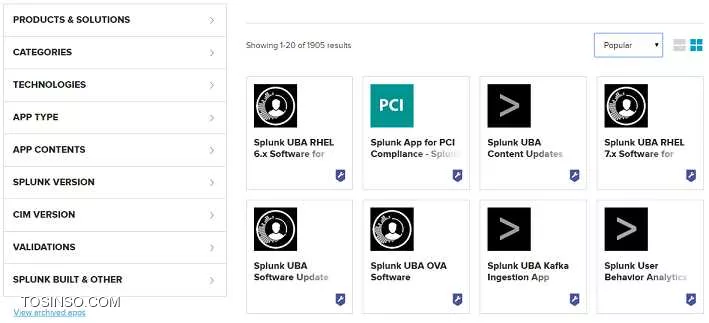
دوره آموزش اسپلانک ( Splunk ) مهندس ارجی به عنوان مکمل در کنار این دوره توصیه می شود
گزارش گارتنر در رابطه با محصولا برتر SEIM در سال 2020:
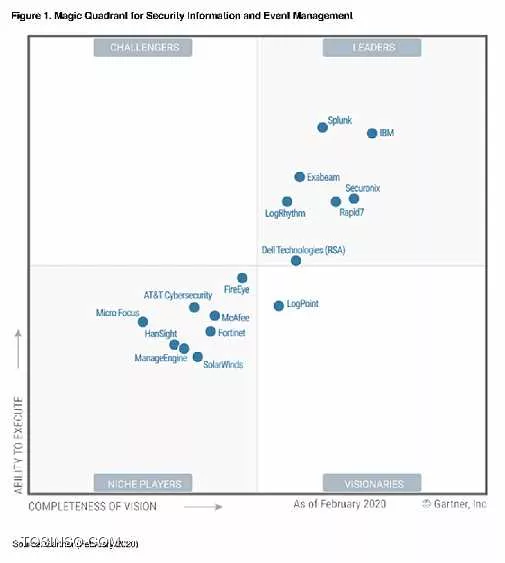
قسمتی از مطالبی که در دوره آموزشی اسپلانک (Splunk) به آن اشاره شده است، به شرح زیر میباشد:
Introduction to Splunk •
Basics •
Splunk Components
How Data Flows
Splunk Pipeline
Run basic searches
Splunk Directory Structure
Use autocomplete to help build a search
Set the time range of a search
Identify the contents of search results
Use the timeline
Work with events
Users and Roles
Control a search job
Save search results
Specify indexes in searches
Use autocomplete and syntax highlighting
Case sensitivity
Using the job inspector to view search performance
Splunk Configuration Files
License Management
(Search Processing Language (SPL •
The rex command
The Transaction Command
The Top, Rare Command
The Rename Command
The Fields Command
The Dedup Command
The Sort Command
The Stats Commands
The eval commands
The iplocation command
The addtotals commands
Using the search and where commands to filter results
The filnull command
The mvexpand Command
Creating Reports, Alert •
Save a search as a report
Edit reports
Describe scheduled reports
Configure scheduled reports
Describe alerts
Create alerts
View fired alerts
Visualization •
Explore visualization types
The geostats command
Create Maps
Create and format charts and timecharts
The Table Command
Creating and Using Macros •
Describe macros
Create and use a basic macro
Add and use arguments with a macro
Creating and Using Workflow Actions •
Creating and using lookups •
Describe lookups
Create a lookup file and create a lookup definition
Configure an automatic lookup
Datasets •
Pivot •
Creating Data Models •
Describe the relationship between data models and pivot
Identify data model attributes
Create a data model
Use a data model in pivot
Creating dashboards •
Overview of Dashboards and Panels
Create a dashboard
Add a report to a dashboard
Edit a dashboard
Dashboard Inputs
Time Range Picker
Text Box
Submit Button
Drop Down
DrillDown
Bucket LifeCycle •
Bucket LifeCycle Overview
Hot Bucket
Warm Bucket
Cold Bucket
Frozen Path
Thawed Path
Thawed Process
Creating and Managing Fields •
Regex
Perform regex field extractions using the Field Extractor (FX)
Perform delimiter field extractions using the FX
Splunk Indexes •
Describe index structure
List types of index buckets
Create new indexes
Monitor indexes with Monitoring Console
Forwarders •
Universal Forwarder Overview
Universal Forwarder Installation
Universal Forwarder Options
Heavy Forwarder Overview
Heavy Forwarder Installation
Heavy Forwarder Options
Forwarder Load Balancing
Clustering •
Splunk cluster overview
License Master
Splunk single-site indexer cluster configuration
Master app bundles
Indexer Clustering and Peer Nodes
Indexer discovery
Splunk search head cluster overview
Search head cluster configuration
Search head cluster deployer
Distributed Search
Splunk Apps •
Describe Splunk apps and add-ons
Install an app on a Splunk instance
Creating Apps
Manage apps and addons
Configure app properties
Create app navigation
Change app Logo


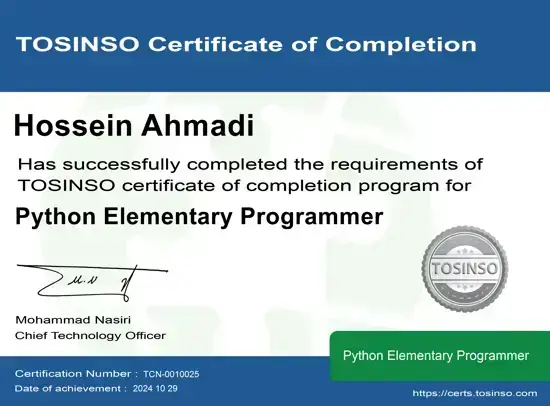
سلام وقتبخیر عالی هست استاد ممنون از لطفتون یک سوال د رقسمت Stream App میخوام نت فلو میکروتیک رو بگیرم Add-on دیگه ای باید نصب بشه؟ ممنون میشم راهنمایی کنید باتشکر
سلام و عرض ادب
توی دوره این موضوع رو توضیح دادم. ساخت اکانت مثل بقیه سایت ها هست، پیچیدگی نداره. فقط اطلاعات ی کشور خارجی رو وارد کنید و از VPN استفاده کنید.
اسپلانک داکیومنتش پابلیک هست، تو سایتش هست ولی با VPN باید وصل شد.
سلام
برای ساخت اکانت اسپلانک خکار باید کرد?
خور میشه به داکیومنت خود اسپلانک دسترسی پیدا کرد
سلام
ممنون از دوره خوبتون
ممنون میشم در مورد دریافت لاگ از pfsense به اسپلانک هم مثال های عملی بگذارید
همچنین سیستم های میکروتیک و سیسکو
همچنین لاگ zeekی که از داخل خود pfsense فعال شده، نه zeek مستقل
همچنین دو مطلبی که خیلی مغفول هست در همه کورس ها
پرداختن به دو ماژول soar و ueba
از نحوه ی نصب گرفته تا کار و ذکر مثال های عملی
با سپاس از آپدیت های خوبی که هر بار اضافه می کنید
پاینده باشید
سلام و عرض ادب
مثل بقیه ثبت نام ها هست، چیز خاصی نداره.
اول VPN بعدش اطلاعات خودتون رو وارد کنین. اون اطلاعاتی هم که ندارین از اینترنت نمونش رو بگیرین وارد کنین.
اگه اجازه Login همچنان نداد یا به هر مشکلی خوردید، مشکل از VPN هست.
لطفا سوالاتتون تو از این به بعد از طریق تیکت بپرسید.
با تشکر
سلام وقت بخیر
برای ساخت اکانت اسپلانک در وب سایت راهنمایی میکنید
با سلام و عرض ادب
خیر
این قابلیت از وبسایت برداشته شده.
با تشکر
سلام
وقت بخیر
آقای مهندس آیا امکان خرید برخی از قسمت های دوره بصورت انتخابی وجود دارد ؟
ممنون
سلامی مجدد خدمت شما
بالا سمت راست صفحه عکس گوشی تلفن
با سلام و احترام
شما در صورتی که دستور زیر بنویسید و داده های خودتون رو ببنید عملا مشکلی ندارید
Index=*
البته چین راست چینش رعایت بشه، اینجا برعکس شده.
لطفا از این به بعد سوال هاتون رو تیکت کنید.
با تشکر